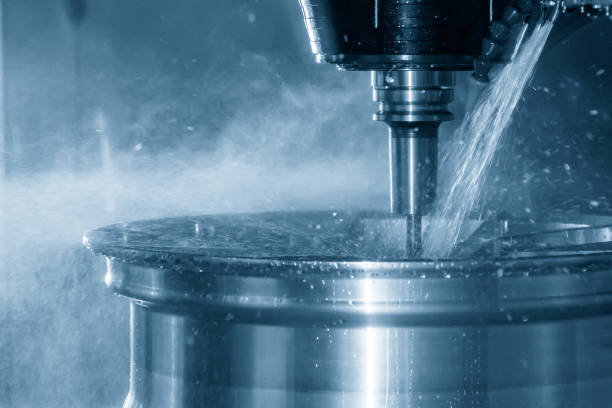Casting CNC machining is a manufacturing process that combines casting and computer numerical control (CNC) machining to produce high-quality and precise parts. It is a cost-effective method that offers superior accuracy and efficiency compared to traditional casting methods.
Casting CNC machining begins with the creation of a mold or pattern, which is used to form the part. The mold is made from a material such as wood, plastic, or metal, and is designed to the exact specifications of the desired part. The mold is then filled with molten metal or other material and left to harden.
Once the casting is complete, the part is removed from the mold and is ready for CNC machining. CNC machining involves the use of computer-controlled machines to remove unwanted material and shape the part to the exact specifications of the design. This process can include drilling, cutting, milling, and other operations.
One of the key benefits of casting CNC machining is its ability to produce parts with high precision and accuracy. The use of CNC machines ensures that each part is made to the exact specifications of the design, with a high degree of repeatability. This means that each part will be identical to the others, with no variation in size or shape.
Another benefit of casting CNC machining is its efficiency. Because the process combines casting and CNC machining, it eliminates the need for additional steps such as welding or assembly. This results in faster production times and lower costs.
Casting CNC machining is also highly versatile, as it can be used to produce parts of virtually any size or shape. This makes it ideal for a wide range of applications, from small, intricate parts to large, complex components.

In addition to its precision, efficiency, and versatility, casting CNC machining also offers excellent surface finishes. Because the process involves removing material with a CNC machine, the resulting surface is smooth and free from imperfections. This makes it ideal for parts that require a high-quality finish, such as those used in the aerospace or medical industries.
Overall, casting CNC machining is a highly effective manufacturing process that offers a range of benefits over traditional casting methods. Its precision, efficiency, versatility, and excellent surface finishes make it an ideal choice for a wide range of applications, and it is quickly becoming a preferred method of production for many industries.
-

- Magnesium alloy die-casting wheel for ebike
-

- Magnesium alloy Thixomolding power batter housing
-

- Magnesium alloy rigid fork for bicycle -customized die casting metal parts
-

- Magnesium alloy thixomolding die-casting UAV parts C
-

- Magnesium alloy die-casting Auto parts Side step Running board
-

- Magnesium alloy Thixomolding power batter housing

 0086-750-5616188
0086-750-5616188 +86 13392089688
+86 13392089688 sales@zhongmei-tech.com
sales@zhongmei-tech.com







